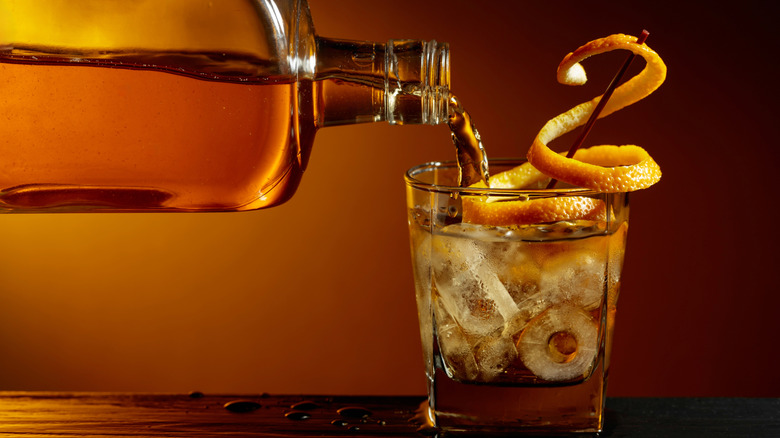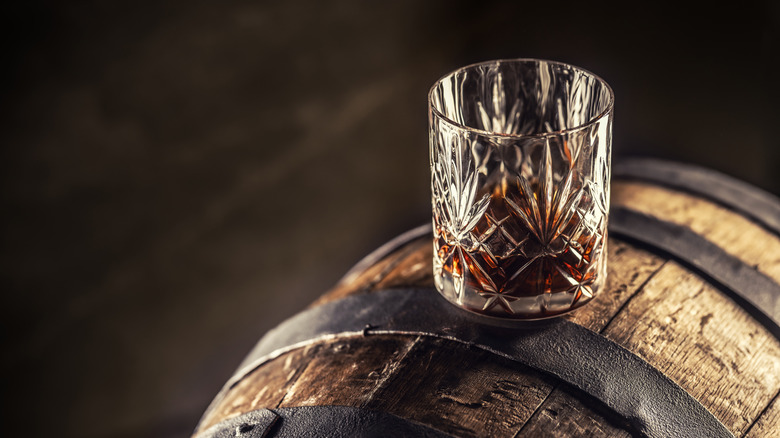Why You Shouldn't Judge A Fine Bourbon By Its Neck Pour
Bourbon has always sat a little higher on the liquor shelf. It is prized for its nuanced flavor with sweeter undertones and the meticulous technique with which it is crafted that make bourbon different from other whiskeys. With 95% of the world's supply coming from Kentucky, its near-exclusive geography and distinct aging style help create an unmatched flavor, one that can cost you a pretty penny. Naturally, you'd want to judge its quality and see if you invested in the right one. But here's where bourbon drinkers make a big mistake – making the call based on the neck pour. That's the first dram from a freshly opened bottle, and if your first sip made you wrinkle your nose, don't be too quick to write it off. Like wine, whiskey needs a moment to breathe. More importantly, once uncorked, the bourbon that has been locked for years suddenly comes in contact with air and sometimes heat. This triggers a process called volatilization, when volatile compounds — mostly alcohol and a few trapped flavor notes — start to evaporate after their long confinement in the bottle.
"They're small molecules, which is why they volatilize so easily," explains Tony Aiken, sensory and education administrator at Kentucky-based Brewing and Distilling Analytical Services (BDAS), in an interview with Garden & Gun. According to him, these molecules are most vulnerable to damage from ultraviolet light, oxidation, and volatilization. The result is often a taste that can swing anywhere from sublime to a little strange on that very first pour.
How to tell if a bourbon is worth its pour
The idea of judging bourbon by its neck pour has gained traction in recent years, thanks in part to social media. But now we know why that first splash can taste a little off and why it's no measure of the bottle's true quality. In short, never judge a bourbon by its neck pour. So, what should you look for instead? If you ask a bourbon steward, the first thing they'll point you toward is color. A darker hue typically signals a long aging of the bourbon in the barrel, often translating to a layered, more concentrated flavor. It's also a sign of less dilution. A paler hue, on the other hand, can suggest higher water content and lower alcohol. The next telling sign of the quality of bourbon is the legs, what is also known as tears. After swirling bourbon in a glass, you'll see droplets slowly slide down the inside. These are the legs of the liquor, and the closer they cling together — and the longer they take to trail back down — the more complex, full-bodied, and strong the whiskey is likely to be.
Smell can be just as revealing as sight when it comes to bourbon. A well-made bourbon can carry hundreds of distinct aroma notes, often layered with a tapestry of warm spices. When nosing bourbon, there are two thumb rules you should follow. First, keep your mouth slightly open to let the aromas flow more freely, and try not to have any kind of perfume (including lip balms) on your body; it will only cloud your senses. No matter the complexity, there are a couple of non-negotiables. Any decent bourbon should carry the unmistakable scents of caramel, vanilla, and, of course, oak. If those classic notes are missing, it's a sign that something's off.

